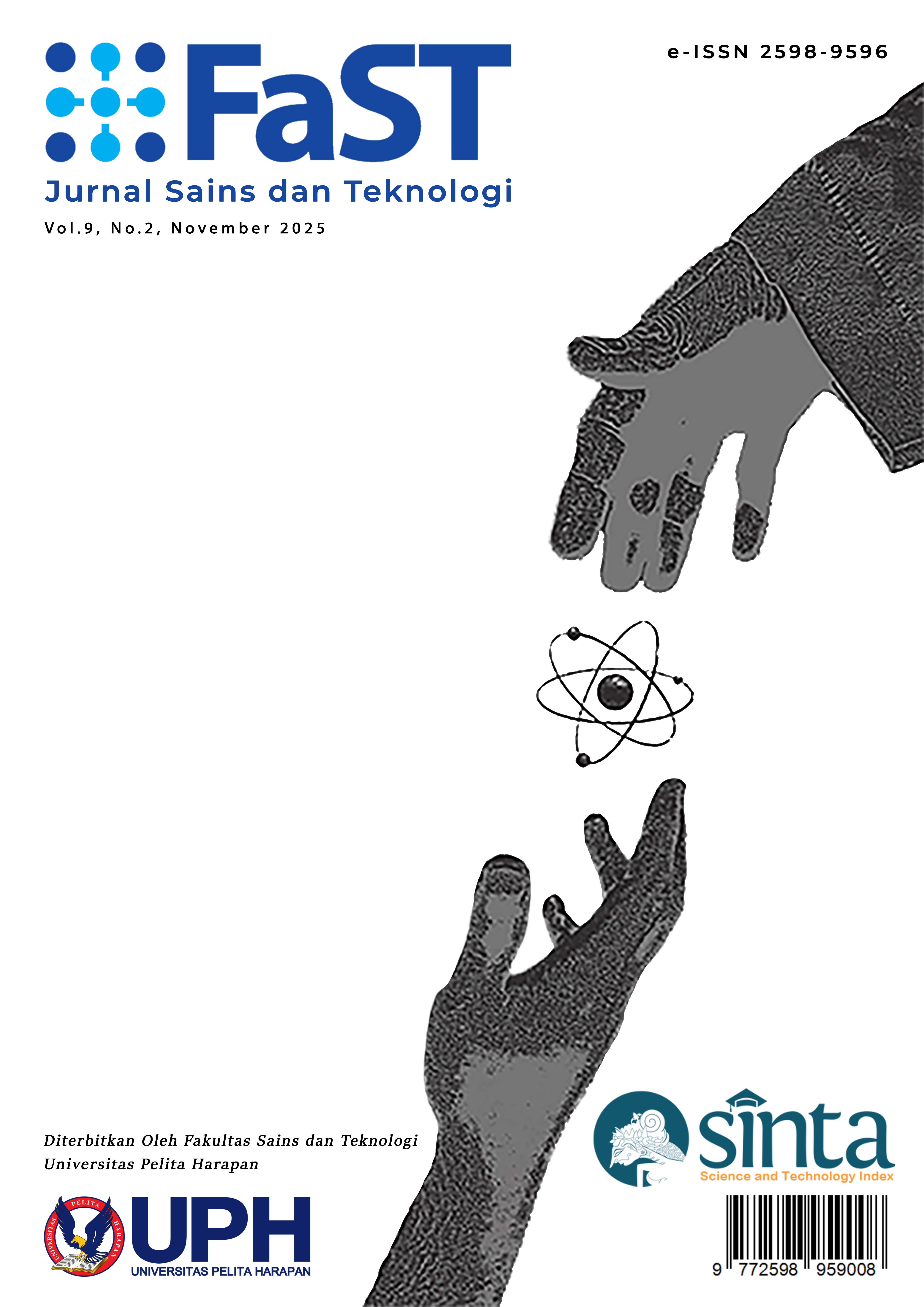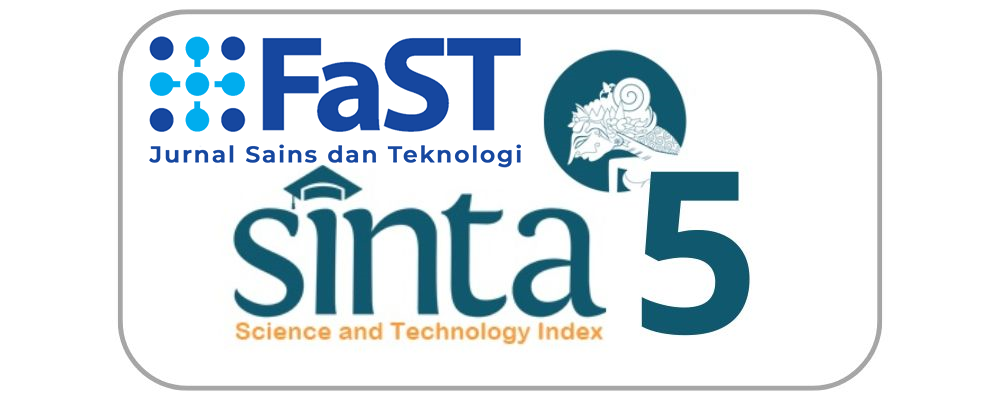Rancang Bangun Alat Pengiris Singkong dengan Metode Quality Function Deployment (QFD)
[Design and Development of a Cassava Slicing Tool using The Quality Function Deployment (QFD) Method]
DOI:
https://doi.org/10.19166/jstfast.v9i2.10369Keywords:
Cassava slicing tools, product design, Quality Function DeploymentAbstract
This research was conducted to design and develop a cassava slicing tool for the UMKM (Micro, Small, and Medium Enterprises) "Keripik Singkong Bu Supiah" located in Keranggan Village. The design and development process of this slicing tool was carried out using the Quality Function Deployment (QFD) approach and a House of Quality (HOQ) matrix, which was employed to gather user needs (voice of the customer) and then further analyzed to generate HOWs (engineering characteristics). Additionally, a component planning matrix was created, resulting in three key components for the tool's development: the main frame, slicing mechanism, and slicing blade. The next step involved designing and constructing the cassava slicing tool based on user requirements. The developed cassava slicing device was constructed from iron and was equipped with three blades mounted on a rotating disc, which was operated manually using a hand crank. The device also features a container for placing the cassava, fitted with a spring mechanism that facilitates the movement of the cassava toward the blades. The testing results of the developed tool showed a 6.1% improvement in slicing time efficiency and a 0.54% increase in slicing yield. Moreover, the tool development helped minimize the risk of hand injuries from the blade and eliminated waste during the cassava slicing process.
Bahasa Indonesia Abstract: Penelitian ini dilakukan dengan tujuan untuk merancang dan mengembangkan alat pengiris singkong pada UMKM Keripik Singkong Bu Supiah yang terletak di Desa Keranggan. Proses perancangan dan pengembangan alat ini dilakukan dengan pendekatan Quality Function Deployment (QFD) yang digunakan untuk mengumpulkan kebutuhan pengguna (voice of customers) yang kemudian akan dianalisis lebih lanjut untuk menghasilkan HOWs (engineering characteristics). Selain itu, terdapat matriks perencanaan komponen yang menghasilkan tiga komponen penting dalam pengembangan alat, yaitu kerangka utama, mekanisme pengirisan, dan pisau pengiris. Proses selanjutnya adalah perancangan dan pembuatan alat pengiris singkong berdasarkan kebutuhan pengguna. Alat pengiris singkong yang dikembangkan terbuat dari besi dengan 3 bilah pisau dipasang pada piringan dan dioperasikan menggunakan engkol yang diputar secara manual. Pada alat tersebut juga terdapat wadah tempat meletakkan singkong yang dilengkapi dengan pegas yang dapat mendorong singkong ke arah pisau. Hasil uji coba dari alat yang telah dikembangkan adalah terdapat peningkatan efisiensi sebesar 6,1% terhadap waktu pengirisan singkong dan peningkatan sebesar 0,54% terhadap hasil irisan singkong. Selain itu, pengembangan alat juga dapat meminimalkan resiko tangan tergores mata pisau dan menghilangkan waste yang terdapat dalam proses pengirisan singkong.
References
Akao, Y. (1990). Quality Function Deployment (QFD) – Integrating Customers’s Requirements into Product Design. USA: Productivity Press.
Akhmad, K. A., & Purnomo, S. (2021). Pengaruh Penerapan Teknologi Informasi pada Usaha Mikro Kecil dan Menengah di Kota Surakarta. Sebatik. 25(1), 234–240 https://doi.org/10.46984/sebatik.v25i1.1293
Dewanto, I. (2023). Perancangan Alat Pemotong Daun Pisang dengan Metode QFD (Quality Function Deployment) untuk Meningkatkan Efisiensi dan Efektivitas pada UKM Legondo Bu Suad. [thesis] Institut Teknologi Dirgantara Adisutjipto Yogyakarta.
Gunawan, M. R. (2020). Perancangan Alat Bantu Pengiris Biji Pinang Muda Menggunakan Metode Quality Function Deployment (QFD). [skripsi] UIN Suska Riau.
Lestariningsih, S., & Mindhayani, I. (2018). Penggunaan Metode Quality Function Deployment dalam Menentukan Karakteristik Kebutuhan Pengguna Alat Pemotong Singkong. SIMETRIS, 9(2), 959-966. 10.24176/simet.v9i2.2484
Maulana, Y., Fahrudin, W. A., Aprina, B., Taufik, & Wahyu. (2022). Perencanaan & Perancangan Produk. Tangerang Selatan: Universitas Pamulang.
Prastyo, Y.A., Maghlidah, S.T., Khano, A. & Andriani, D.P. (2019). Peningkatan Kualitas Alat Bantu Pemotong Tempe pada UKM Keripik Tempe Menggunakan HOQ. Prosiding Seminar Nasional Teknik Industri. Universitas Gadjah Mada.
Sri, M., & Ahmad, Y.. (2017). Peluang dan Tantangan Pengembangan Usaha Mikro Kecil Menengah (UMKM) dari Berbagai Aspek Ekonomi. Jurnal Ilmiah Manajemen dan Bisnis, 2(1),181-197. https://journal.undiknas.ac.id/index.php/manajemen/article/view/155
Syarif, A. A., Harahap, I. F., & Hasibuan, Y. M. (2024). Perancangan Alat Pengiris Singkong Otomatis Untuk Menurunkan Resiko Cidera Menggunakan Metode RULA Dan REBA. Jurnal Optimasi Teknik Industri, 6(4), 15-22. https://doi.org/10.30998/joti.v6i1.21303
Ulrich, K. T., & Eppinger, S. D. (2016). Product Deisgn and Development (Sixth Edition). New York: Mc Graw Hill Education
Downloads
Published
Issue
Section
License
Copyright (c) 2025 Agustina Christiani, Jessica Theresia

This work is licensed under a Creative Commons Attribution-ShareAlike 4.0 International License.
“Authors who publish with this journal agree to the following terms:
1) Authors retain copyright and grant the journal right of first publication with the work simultaneously licensed under a Creative Commons Attribution License (CC-BY-SA 4.0) that allows others to share the work with an acknowledgement of the work's authorship and initial publication in this journal.
2) Authors are able to enter into separate, additional contractual arrangements for the non-exclusive distribution of the journal's published version of the work (e.g., post it to an institutional repository or publish it in a book), with an acknowledgement of its initial publication in this journal.
3) Authors are permitted and encouraged to post their work online (e.g., in institutional repositories or on their website). The final published PDF should be used and bibliographic details that credit the publication in this journal should be included.”



